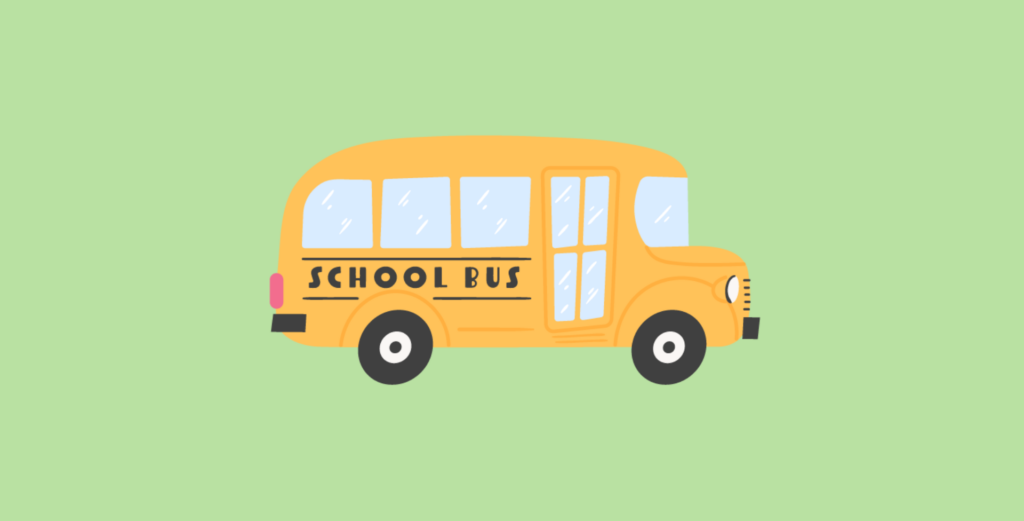
Going back to school season is filled with changes, transitions, and a lot of emotions. Some are positive, like anticipation and excitement. Others are more difficult, like fear, anxiety, and sadness.
For some children, back to school anxiety starts when the school bus rolls around the corner. For others, it lingers all summer and really begins churning when every aisle in the store is filled with back to school banners and supplies. Back to school anxiety is real. It manifests in emotional responses like anger, tears, and acting out or withdrawing. It results in physical symptoms like headaches, upset stomachs, muscle soreness, and even a racing heart.
Whether your child is a seasoned back-to-school pro, or if this is the first time your little one is venturing from home, meditation and mindfulness can make back to school season, and the entire year, much easier.
Whether or not kids like it, back to school happens around this time every year. This season, like all others in life, brings changes, some welcome, some not, and that’s why meditation and mindfulness practices can be so helpful.
Meditation and mindfulness are about accepting things, as they are, without judgment. Through meditation, children learn to be in the present moment.
They learn that feelings are simply that…feelings. Joy, sadness, anxiety, all feelings are like waves, they come, they go, and they are all okay. Children who meditate feel safer, more calm, and more easily adapt to transitions because mindfulness trains their mind to stay in the moment.
Staying in the moment helps kids feel calm and grounded, and less likely to project worries into their future. During the back to school season, validating all feelings is especially important, as some kids may feel ashamed about feeling more nervous than their sibling or a friend.
Negative self-talk is unfortunately part of all of our vocabularies. This is the time of year you will often hear kids saying things like:
“I won’t have any friends.”
“The teacher isn’t going to like me.”
“I’m not good at learning.”
“Other kids are better at things than me.”
When repeated, over and over, children start believing their negative self-talk and it becomes a self-fulfilling prophecy, bringing exactly what they fear, and don’t want, into their lives.
But good news: there is a meditation practice that can help kids reframe their negative thoughts and words. It’s the practice of saying affirmations.
For thousands of years, the practice of meditation has included the repetition of mantras or affirmations. Children can use affirmations in meditation, and also bring the practice into their school day. Repeating uplifting, positive words and phrases promotes a sense of peace and helps eliminate fears. Affirmations are a great addition to a before school routine. They provide a consistent boost of positivity that helps elevate school mornings and reduce back to school anxiety.
Some good back to school affirmations include:
“I easily learn new things.”
“I am more than enough.”
“It’s okay not to know everything.”
“I can do hard things.”
Visualization is something most children do all the time. Getting lost in daydreams and fantasy worlds is part of being a kid.
When it comes to back to school, though, many kids visualize things that are worst case scenarios. They might imagine getting to school and forgetting their homework, getting yelled at by the teacher, being made fun of by another child, or not knowing the answer when called on in class.
With thoughts like those, it is no wonder why back to school anxiety is deep rooted and can grow into huge fears that become paralyzing for many kids. To counteract these intrusive thoughts, meditation offers an easy remedy: practicing visualizations. Visualization involves kids using their imaginations to transport them into real or pretend places that make them feel relaxed.
Help your child visualize a day at school where they are calm, enjoying friends, feeling confident, and having fun. When children picture themselves at school this way, they are less likely to suffer first day fears or school anxiety.
Guided story meditations are also a great way for children with back to school anxiety to practice visualization. While listening, children create images in their minds of the story as it unfolds. Visualization can help with back to school in many ways, encouraging feelings of confidence, promoting restful sleep, and easing anxiety.
Children can use visualization when they are feeling anxious or overwhelmed at school, on the bus, or even in the lunchroom. It’s best if children have practiced this at home several times so it is easier to remember and do when they are not at home. In time the practice will help them feel at ease wherever they are.
The term “loving-kindness” doesn’t make the list of top ten adjectives describing going back to school. In this post-pandemic world there’s a lot of fear, meanness and wariness surrounding a lot of social interactions. For kids with back to school anxiety, this means that they can feel disconnected from peers and the adults around them. Having a loving-kindness meditation practice aims to change all that.
Loving-kindness meditation is a practice of loving yourself, the planet, and all living beings. In a gentle, graded way, practitioners of loving-kindness meditation send love to themselves and those around them.
The premise behind loving-kindness meditation is that when one feels love and connection to all living beings (plants and animals included), fear disappears, as you cannot focus on love and fear at the same time.
There are many benefits for kids who practice loving-kindness meditation. They can feel more empathy and compassion for their classmates and teachers, feel more grounded, and have increased patience for themselves and other children.
This results in a kinder, gentler educational experience for everyone: the child, their peers, the classroom, and the school community at large.
A lot of kids don’t think there is much to be grateful for, come August. The days are shorter, tests and quizzes are on the horizon, and then there is that dreaded thing called homework.
A gratitude practice is an easy way to combat some of the negative feelings that come with changes and transitions, ushering in a new way of thinking, and being. A gratitude practice is one of the simplest forms of meditation. It involves thinking about what we are grateful for, and feeling deep appreciation for those things.
When children (and adults) reflect on things they are grateful for, big and small, like loving relationships, nature, the joy of seeing a rainbow or the taste of a chocolate chip cookie, positive feelings result.
This practice isn’t about making long lists, rather it is about cultivating a feeling of joy and appreciation for things tangible and intangible, and focusing also on the why. For example, you might say, “I am grateful for the rain because it waters the plants that give me food from my garden.” Or, “I am grateful for my friend who supports and cares for me.”
For kids dealing with back-to-school worries, a gratitude practice can help them focus on the good things that happened in their day. With repeated practice, kids will ruminate less on negative incidents and learn to look for the positive aspects of their school day.
Most kids experience back to school in the past or the future. They may remember an unpleasant situation from the previous year, and fear that it will happen again. Kids might rev up their imaginations and project a fear or worry about a scenario that might happen, into the upcoming school season.
Here’s how mindfulness practices can help back to school anxiety:
In the simplest terms, mindfulness is about being present, moment to moment. It’s experiencing each moment, as it happens, without projecting yourself into the past, or the future. Mindful practices include being aware of your breath, taking notice of what is going on around you with all of your senses, and feeling a connection to the current moment.
Mindful practices can help with back to school by keeping kids focused on the here and now. This is especially helpful if they are anxious or worried. There are several quick and easy ways for them to practice mindfulness wherever they are, in the classroom, on the bus, or even in the cafeteria.
5 Fingers is an easy mindfulness exercise designed to help kids (and adults) connect to the present moment. If they are able, they can hold out their hand and use each finger as a reminder of their five senses. Kids then ground themselves by noticing one thing they can see, feel, hear, taste and touch.
This practice might be best suited for older kids. Like 5 Fingers, this mindful practice involves noticing five things you can see, four things you can hear, three things you can touch, two things you can smell, and one thing you can taste.
The meditation practices of acceptance, affirmations, visualization, loving-kindness, gratitude, and mindfulness can help kids deal with back to school fears and worries. Each practice is stand-alone, or can be combined with others, to help kids end the summer and begin the school year feeling calm, confident, and ready to learn.
Ready to begin this school year with a practice of meditation and mindfulness? Preview our content and sign up to start this school with the most important school supply: meditation.

